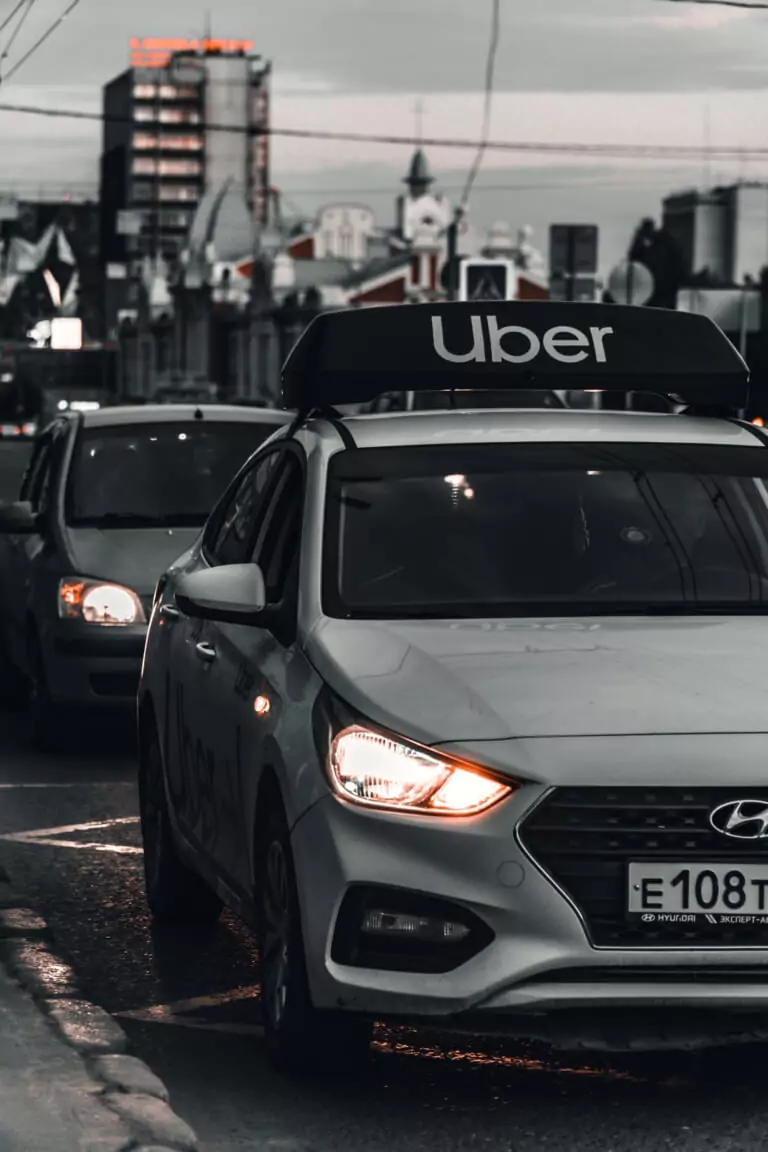Originally published June 25, 2019 , updated on September 9, 2024
On-demand delivery apps – the model which has been popularised by Uber – have become commonplace across many industries. Features of these apps include the:
-
Ability to place orders
-
Capability to schedule deliveries
-
Facility to track deliveries on a map
-
Ability to pay for deliveries
-
Facility to rate or provide feedback on deliveries
Many businesses are hopping on the bandwagon, secure in the knowledge that this is exactly what users are looking for. These apps are a fantastic way to get your company on the map and make sure that you’re (quite literally) in your customers’ back pockets.
Is it worth it? How much does it cost?
Let’s take a closer look.
Several Industries Have Been “Uberised”

Uber isn’t alone in the on-demand delivery app sphere. These apps are taking almost every industry out there by storm.
Package Delivery:
The model that certain companies in this industry (such as Shyp, Uber and Doorman) have adopted – in order words a driver going to a pick-up location for a package – is not cost effective. As such, they have not been successful.
However, there have been companies (such as Hitch and Roadie) in this space who have been successful. Their model uses people who are going in the direction that the package needs to be delivered to drop off the goods.
Local Food and Grocery Delivery:
Two companies who play in this space are Instacart and Postmates:
-
Instacart which provides same-day grocery deliveries from the stores that you already shop at. The app hires personal shoppers who purchase the goods for you and deliver them.
-
Postmates works similarly but instead of using personal shoppers to deliver the goods the app uses their own delivery people.
On-Demand Delivery App for Retailers:
With the popularity of online shopping on smart devices, many retailers have jumped on the bandwagon and have developed apps in order to facilitate their customers’ experiences. Amazon is one such retailer.
Other apps – such as Deliv – work on the same model as instacart and Postmates – but in the retail space. Apps that focus on food delivery or grocery shopping should include the following features:
-
Wish lists
-
Product search
-
Real-time messaging or calls.
The popularity of these genres of apps is not waning. In fact, it’s growing exponentially. According to Appinventiv:
-
86.5 million Americans have used a service which operates along the same lines as Uber does,
-
45 million Americans have been, or are, service providers in the on-demand service industry, and
-
22.4 million people spend $57.6 billion – every year – on on-demand services.
And these are just on-demand delivery apps in the U.S. In other parts of the world, similar industries have been revolutionised using the always-on mentality. However, in order to ensure a successful business it’s not enough for on-demand delivery apps to create me-too businesses that mimic Uber.
In fact, Uber itself fell into the trap of mimicking their model too much when they innovated new products:
-
Uber developed UberRUSH which was an on-demand delivery service. It was based on the assumption that consumers want their packages delivered fast but they don’t mind paying extra for this. However, what they failed to do it realise that consumers do indeed want packages delivered quickly but they don’t want to pay extra for this.
-
The tech company took what it learned from UberRUSH and developed Uber Eats, the food-delivery service that uses the Uber network of drivers to deliver food from a restaurant to a customer when an order is placed.
What Makes an On-demand Delivery App Successful?

Before we answer the question of how much it costs to develop an on-demand delivery app, we need to look at the three factors that you’ve got to get right to build a successful on-demand delivery app. These are:
-
User acquisition
-
Transportation
-
Delivery costs
User Acquisition
In order to build a successful on-demand delivery app, you first need a good base of users who will use the app’s services. This is because on-demand services apps’ competitive advantage is cheaper and faster delivery.
Here are some tips to building your user base:
-
Start small: Begin servicing a small area that is densely populated. If there is a massive uptake, you can start expanding your area. If not,
-
Start marketing before you launch. Examples of ways you can do this include social media, public relations and referral programmes.
-
Create strategic partnerships. Creating strategic partnerships with the companies – whose services you’re going to be delivering – is another good marketing channel.
Just as it is important to acquire new customers for an on-demand delivery app it’s vital for you to keep your business attractive to customers. Here are some ways that you can do this:
-
Be responsive to customer queries. This will make them feel that they are important to you, that you value them. As such, they will remain loyal to you.
Create a rating system in your app so that customers have confidence that they are getting service that is the best of the best.
-
Make it known to your customers that you are meticulous about screening your contractors. This will give your clients added confidence when using you.
-
Institute a loyalty programme. People will keep using you if they know that they will be rewarded.
Happiness of Contractors
Keeping your contractors happy is also extremely important. Here’s an idea of how you can do this with your
on-demand delivery app:
-
Pay your contractors competitively. This will keep them happy and prevent them from looking for work elsewhere.
-
Consider subsiding fuel costs. Even if you pay your contractors a competitive rate, if most of the earnings go towards fuel costs they might reconsider working for you.
-
Find ways of motivating your contractors to constantly achieve more and give the best service that they can.
Transportation and delivery costs
Here are a few tips to cut delivery costs:
-
Synchronise your routes and don’t make contractors travel more than they should. For example, Uber drivers are only alerted of ride requests in the area that they are currently in.
-
Decrease the delivery radius. This also saves on time and fuel.
-
Another way of decreasing fuel costs is to adopt greener forms of transportation. For example, start a bike delivery service.
Costs Involved in Developing an On-demand Delivery App

In order to calculate the total cost of developing an on-demand delivery app, you need to multiply the number of hours by the vendor rate. It’s estimated that the time it takes to develop iOS and Android apps is roughly the same – between 3 276 and 4 794 hours.
The costs of delivery are high so make sure that your profitability models cover all of your expenses. Remember that you need to ensure that you walk away with a good amount of profit that justifies the time, money and effort that you put into the app.
Post Views: 1008


















